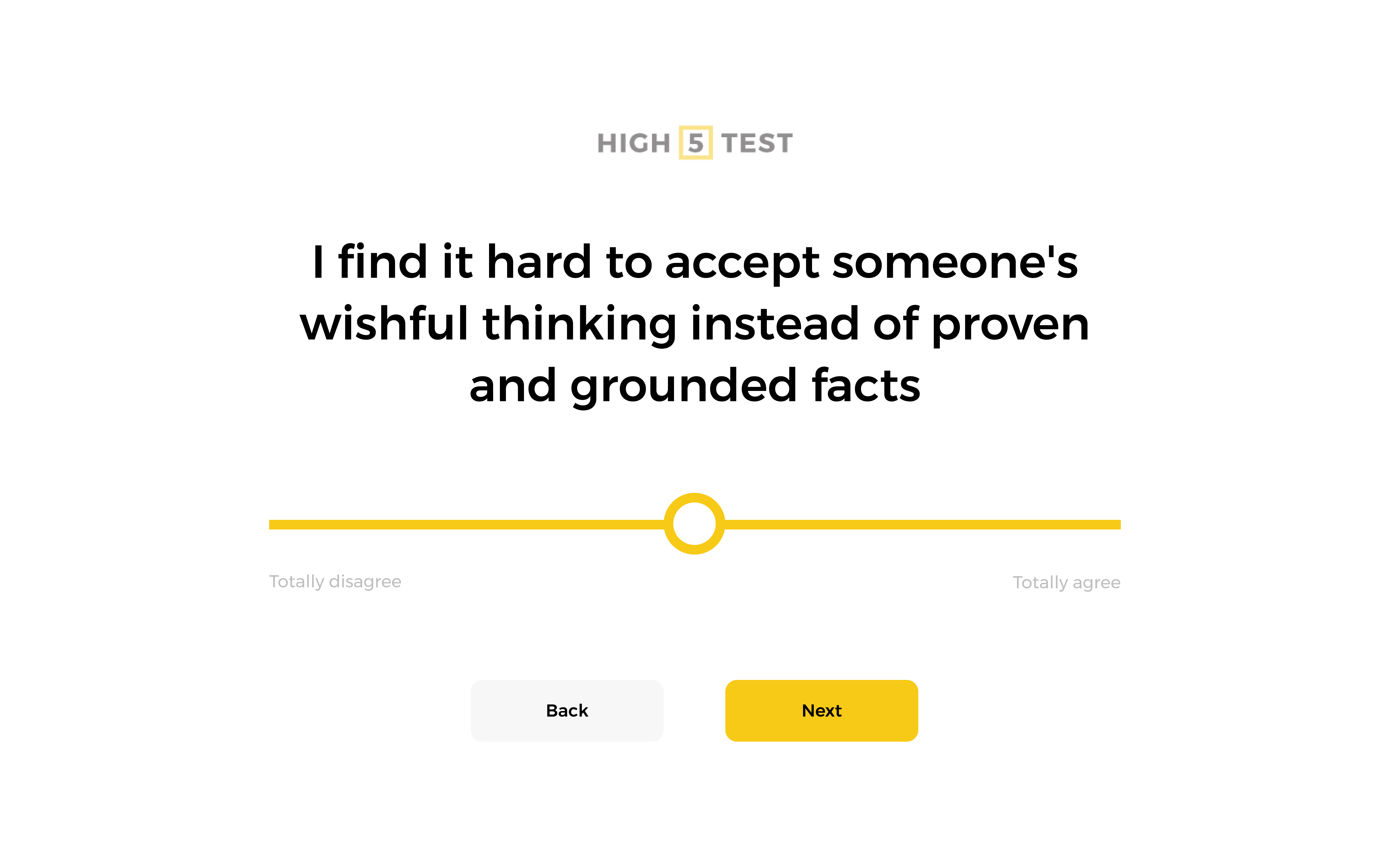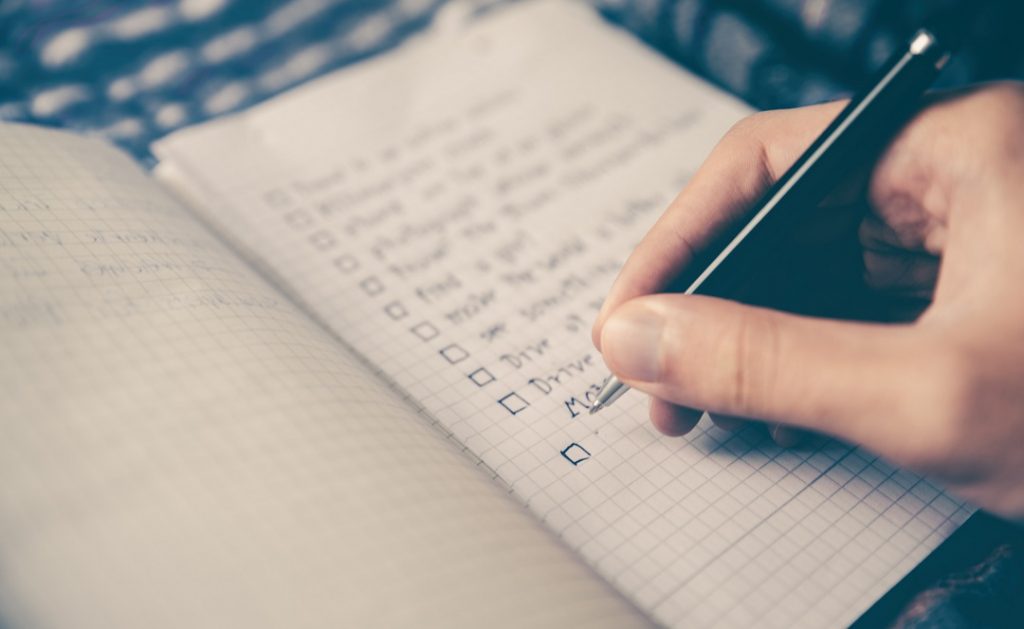Teachers have an incredibly important role, and so much depends on their skills, character traits, character traits and experiences to educate the future generation. Teachers must harness all of these elements in order to bring out the best in their students, day in and day out [1]. Positive learning experiences can only occur as a result of effective teaching. However, while some teachers are naturally gifted at sharing information and building the skills and capacity of their students, others struggle. Every teacher will have relative strengths and weaknesses, and it is important for them to understand both in order to harness their strengths and find ways to address any challenges.
In this article, we will explore essential traits for school teachers and introduce how the HIGH5 strengths assessment can help educators discover their top personal strengths. Understanding these can empower teachers to harness their unique qualities to enhance their teaching effectiveness.
Pro Tip From HIGH5
Before applying new teaching strategies, consider taking the HIGH5 strengths assessment to identify your unique strengths. This understanding can guide you to tailor your teaching methods based on what naturally works best for you, enhancing your effectiveness in the classroom.
15 strengths & qualities of a good teacher
There are a number of areas of qualities that good teachers demonstrate, this can include [1,2,3];
- Having strong communication and interpersonal skills
- Being an active listener
- Collaborative
- Adaptable
- Engaging and enthusiastic
- Empathetic
- Patient
- Real-world learning is prioritized
- Great teachers share their best practices
- Never stops learning
- Has strong organizational skills
- Passion for Teaching
- Problem-solvers
- Able to simplify concepts
- Creative
Having strong communication and interpersonal skills
Teachers must be able to communicate information effectively and in an engaging manner to keep their student’s attention. The best way to understand your student’s needs is by speaking to them one-on-one, using clear language, and checking for understanding [3]. Additionally, when required to handle challenging behavior demonstrated by students, it may require addressing things with either the student (or depending on the age of their parents) and outlining rules, boundaries and expectations clearly. Both learning and teaching require strong communication skills [3].
Active listening
Communication goes beyond simply talking. It continues once the teacher stops speaking and begins to listen. Listening also involves an element of watching, and teachers must be able to quickly read students’ facial expressions, postures, and gestures to help them interpret the true meaning of the communication [4].
Active listening involves looking at the person, using their own gestures, postures and facial expressions to demonstrate that they are paying attention and then showing that they have heard and understand what their student is saying by checking understanding, or summarizing what they have heard [4]. They must listen to students about their concerns, fears, and struggles. This is key to developing confidence in the students. Listening also helps teachers better understand their students’ educational needs so that lessons can be tailored to the students.
Collaborative
Collaboration can occur at two levels in a school setting, firstly with colleagues as you are never working alone and secondly with the students themselves. In fact, teachers may even be called on to support the collaborative skills of their students so that they can work together harmoniously [5]. Collaboration requires skills such as; being able to accept opposing viewpoints, providing clear and articulate explanations, being able to give and receive help, and having a strong capacity to negotiate [5].
Adaptability
Working with people often means having to react quickly or be spontaneous to meet the ever-changing needs of students, societal expectations and ever-evolving technology. Teachers who are adaptable and flexible are more likely to be successful as they can more effectively respond to diverse student needs and learning styles, and unexpected challenges as well as being open to adapting new teaching methods [3].
Adaptable teachers are better able to tailor their approaches, stay current with educational trends and will continuously improve their teaching practices, which ultimately enhances student outcomes and success [3].
Engaging and Exciting
You can engage students in a vast number of ways. Utilize humor, creativity in your lessons, and charisma when you are speaking. Public speaking skills can strongly contribute to your ability to engage individuals [4]. Depending on the classroom level and student’s age, engagement will look different. Usually, these teachers think outside the box and aren’t afraid to make their kids scratch their heads or burst out laughing.
Teachers who are enthusiastic about teaching in general, or towards their subject tend to see higher quality outcomes in their students’ work. This enthusiasm can be seen in the way they engage with students, the support they provide, and observable behaviors like teaching style, facial expression or gestures. Being excited and enthusiastic helps teachers convey the positive value of the topic at hand [6].
Empathetic
Students’ experience a wide range of emotions like; anxiety, fear, boredom, and frustration – this can arise from things happening at home, or it can relate to events in the classroom like having an exam or struggling with peer relationships [7]. It’s important for teachers to understand and be able to respond to these emotions effectively as they can impact on their ability to learn [7]. Being empathic is being able to step into someone else’s shoes and understand why they might be feeling or reacting a certain way [7].
Being empathic can help students in a number of ways. It can help students feel safe, secure, and heard (when someone sees and understands how they feel) which can reduce challenging behaviors and also promote a positive student/teacher bond [7].
Sometimes, they just need someone to talk to and understand that they cannot be perfect, especially during a time when they are struggling. Be observant and attentive to your student’s needs. If their situation is especially dire, consider being more lenient and understanding. Recognizing that what is easy for one student may not be simple for others is one of the key aspects of teaching. Keep track of all your students, and help those who struggle.
Patience
Whether you are working with kindergarten kids or college students, teachers constantly have their patience tested. Classroom behavior may be challenging at times, or you may have to speak with individuals who struggle with certain topics or even to regulate and manage big emotions. You must have the patience to successfully address these issues and many others [8]. Some teachers believe that even more patience is needed to speak with parents than with students.
Real-world learning is prioritized
Great teachers take engagement to the next level by incorporating real-world elements into the classroom. This is true for both the students and the teachers themselves. Real-world experiences can help students experience new things and learn quickly. There is also a higher chance they will retain the knowledge. The practical benefit of learning becomes evident through real-world experience.
Great teachers share their best practices
The best teachers are excited to teach others everything they know. They love sharing their secrets to success, knowledge, and major insights [6]. Education involves experimenting with many teaching methods and communication styles. Once you find which strategies work for you, share them with other teachers to benefit the students. Transparency, collaboration, and observance are both needed to succeed in this career path [5].
Never stop learning
A love of learning unites all teachers, and the best educators enjoy learning inside and outside of their careers. It does not matter whether you are learning about your specific lecture topic, exploring new leadership or communication styles, experimenting with new technologies, seeking adventure in new ways, or simply talking to someone with a unique perspective [5]. You should never feel satisfied with how much you know. Openness to experience new things and explore new ideas can benefit you, and your students in the long run.
Organizational abilities
The organization consists of several tasks. For instance, you can sort your files, organize your desk, create a digital binder, and so on. Doing so will keep you productive as a teacher. It saves you time, which you can later spend with your students. Plus, it eliminates some stress and frustration associated with not being able to find files. An organized classroom also benefits student productivity and keeps them on a consistent schedule. There is an association between student learning and engagement when there is structure in the classroom and curriculum [9].
Passion for teaching
This is especially necessary when dealing with young children. Superintendents and principals enjoy hiring individuals who truly care about students and the learning process. Teachers spend hours at a time on their feet, which taxes them mentally and physically. With the intensity of this profession, one must truly be passionate to continue teaching each day.
Problem-solving
You can be an amazing teacher, but even the best educators are met with problems during their careers. It could be dealing with unruly students or dropping school grades across your class. Being able to quickly solve problems creatively and effectively can make dealing with such issues less painful [3]. It saves you time and energy and helps tackle challenges that could negatively impact student learning.
Ability to simplify concepts
Some notions are easy to comprehend. Others, however, are just extremely difficult to understand. Many individuals struggle with abstract ideas, but some students may not understand ideas that you may find ‘simple.’ Teachers should be willing to explain anything, no matter how challenging they perceive it to be. They should be able to describe these hard concepts with simple language that resonates with students [10].
Creativity
Creative problem-solving and teaching methods benefit both students and teachers. Creativity can be very beneficial when trying to reduce stress levels and burnout rates. Sometimes, trying a new approach is exactly what is needed to reenergize you and revitalize your curriculum, and teaching strategies or address a problem in the classroom [3].
What are the qualities and strengths of a great teacher?
To maintain positive, consistent relationships with students, parents, and colleagues, teachers must have a unique skill set. Being able to communicate efficiently and effectively is one of the keys to teacher strength [4]. Teachers constantly communicate with parents and their students, so being able to engage others and share their opinions efficiently is crucial. Additionally, empathy is another key trait that teachers must demonstrate in order to help build positive relationships with their students [7]. At times, students will go through periods of pain in their lives. Teachers should be willing to put themselves in their student’s shoes to best serve their educational needs. Sometimes, deadlines may need to be altered.
Empathy also results in a more tailored educational approach. Patience, adaptability, and organization all help a teacher succeed in their career. Patience can contribute to more positive teacher/student relationships and increased learning outcomes [8]. It encourages educators to step back, listen to the student, and formulate a plan together instead of getting frustrated. Adaptability is a necessity for the modern teacher. Each year, new technologies are updated, and the curriculum changes. Also, students’ needs and the teaching environment may change, which requires the teacher to adapt. Being organized keeps teachers’ stress levels low and increases student engagement and outcomes.
What are the weaknesses of a teacher?
As an educator, working on your weaknesses is especially important. Your ability to inspire students, communicate, stay organized, and so on all have a tangible impact on your students. Therefore, you should have a strong motivation to find your biggest weakness and tackle it head-on. Every educator has their own teacher weakness. Some may be disorganized, while others struggle to connect with their students. Regardless, all of these weak points should be addressed as soon as possible so they do not negatively impact your career and the future generation.
Potential teacher weaknesses could be:
- Lack of experience in working with certain age groups of children.
- Poor communication, interpersonal, or public speaking skills.
- Difficulty comprehending complex student relationships and empathizing with others.
- Over or under planning (being too rigid, or not organized enough)
- Inability to adapt.
How do you identify and improve the strengths of a teacher?
The first step in identifying your teaching strengths is to take the HIGH5 strengths test. This tool not only helps you pinpoint your top strengths but also provides insights into how these can be optimally utilized in educational settings, fostering personal and professional growth.
Pro Tip From HIGH5
Utilize the detailed personalized report from your HIGH5 strengths assessment to target areas for professional development. Focus on strengths that align with educational competencies and explore resources or training programs that can help you build on these areas.
The second great way to identify your strengths as a teacher is to look at the data. Whenever your students take a test, take note of the median score. Notice any patterns between how they score over time and whenever you change your teaching style, communication method, tone, or delegation style.
If one median score is significantly better than others, identify which strategy you used to garner that high score and consider it your strength. You can always ask your colleagues, students, or students’ parents directly for some feedback.
Simply ask the students to rate how engaged your lecture or lesson delivery is. Take note of any compliments you get after teaching, too. If many students thank you for being understanding, consider empathy a strength. If you notice lots of kids complimenting you on your humor, you are likely engaging.
How do you turn teacher weaknesses into strengths?
Improving your weaknesses starts with first identifying them. As with strength identification, it is best to reach out to students directly and ask what they believe is lacking in your execution. Test scores can also indicate if your students are disengaged in a particular subject. Once you figure out your weaknesses, make sure you have the right personal development mindset. Ensure you have a positive attitude to teaching and are truly energized by your work. Helping your students should always be your number one priority.
After that is established, you can begin experimenting with different strategies to overcome your weaknesses. These strategies will vary depending on the weakness you have. If you need help, try asking more experienced colleagues for advice. They have likely had to deal with a similar struggle at some point in their career. In general, keep in mind that there is usually no harm in trying out a new approach to teaching. Just keep track of how long each strategy works. When one produces results you are thrilled with, stick with it and consider your weakness addressed.
How do you highlight the strengths of a teacher in a resume?
After identifying your key teaching strengths through the HIGH5 strengths test, strategically showcase these on your resume. Highlight how each strength has been effectively applied in your teaching practice to demonstrate your unique capabilities to prospective employers. Doing so will make you a more appealing candidate to recruiters. To do this, start by creating a skills section. The section is solely dedicated to highlighting your abilities as a teacher.
Pro Tip From HIGH5
Incorporate specific examples of how your strengths identified through the HIGH5 test have led to positive outcomes in your teaching. This approach not only personalizes your resume but also provides tangible evidence of your effectiveness as an educator.
Use bullet points to make the list more visually appealing and manageable. Be sure to do more than just list your skills. You should also provide examples of how you utilized your abilities to benefit your students.
Strengths of a teacher FAQ
What are the strengths of a teacher assistant?
A teaching assistant has a similar strength profile to a school teacher. Being organized, empathetic, comfortable with adapting quickly, creative, a problem solver, good at building relationships, maintaining strong communication skills, having passion and energy, being a team-oriented person, being able to manage behavior, and having strong numeracy as well as literacy skills will benefit the teaching assistant in their career [3].
What skills does a dance teacher need?
Dance teachers have a few strengths that differentiate them from other types of educators. Individuals must be professional, dedicated, flexible, understanding, patient, passionate, experienced in the art of dance, sensitive, have a good reputation, uplifting and encouraging, and technically skilled to be an elite dance teacher [11].
What are the strengths of a preschool teacher?
Since preschool teachers will work with extremely young children, the job requires a fairly unique strength profile. Such strengths include compassion, patience, flexibility, creativity, humor, understanding/empathy, dedication, open-mindedness, enthusiasm for children, and organization [3].
References:
- Burroughs, N. et al. (2019). A Review of the Literature on Teacher Effectiveness and Student Outcomes. Teaching for Excellence and Equity. IEA Research for Education, vol 6. Springer, Cham. https://doi.org/10.1007/978-3-030-16151-4_2.
- Burić, I., Butković, A., & Kim, L.E. (2023). Teacher personality domains and facets: Their unique associations with student-ratings of teaching quality and teacher enthusiasm. Learning and Instruction. https://doi.org/10.1016/j.learninstruc.2023.101827.
- Göncz, L. (2017). Teacher personality: a review of psychological research and guidelines for a more comprehensive theory in educational psychology. Open Review of Educational Research, 4(1), 75–95. https://doi.org/10.1080/23265507.2017.1339572.
- Dash, Bipin. (2022). The Art of Effective Listening Skills: Needs, Goals and Strategies. 2. 1-9. https://www.researchgate.net/publication/364673287_The_Art_of_Effective_Listening_Skills_Needs_Goals_and_Strategies.
- Le, H., Janssen, J., & Wubbels, T. (2017). Collaborative learning practices: teacher and student perceived obstacles to effective student collaboration. Cambridge Journal of Education, 48(1), 103–122. https://doi.org/10.1080/0305764X.2016.1259389.
- Mahler, D., Großschedl, J., & Harms, U. (2018). Does motivation matter? – The relationship between teachers’ self-efficacy and enthusiasm and students’ performance. PloS one, 13(11), e0207252. https://doi.org/10.1371/journal.pone.0207252.
- Aldrup, K., Carstensen, B. & Klusmann, U. Is Empathy the Key to Effective Teaching? A Systematic Review of Its Association with Teacher-Student Interactions and Student Outcomes. Educ Psychol Rev 34, 1177–1216 (2022). https://doi.org/10.1007/s10648-021-09649-y
- Zhang Q. (2022). The Role of Teachers’ Interpersonal Behaviors in Learners’ Academic Achievements. Frontiers in psychology, 13, 921832. https://doi.org/10.3389/fpsyg.2022.921832.
- Woodcock, S., & Reupert, A. (2023). First-year primary teachers’ classroom management strategies: Perceptions of use, confidence, and effectiveness. Journal of Education for Teaching, 50(1), 90–106. https://doi.org/10.1080/02607476.2023.2219218.
- Kim, S., Raza, M., & Seidman, E. (2019). Improving 21st-century teaching skills: The key to effective 21st-century learners. Research in Comparative and International Education, 14(1), 99-117. https://doi.org/10.1177/1745499919829214.
- Mainwaring, L. M., & Krasnow, D. H. (2010). Teaching the Dance Class: Strategies to Enhance Skill Acquisition, Mastery and Positive Self-Image. Journal of Dance Education, 10(1), 14–21. https://doi.org/10.1080/15290824.2010.10387153.













